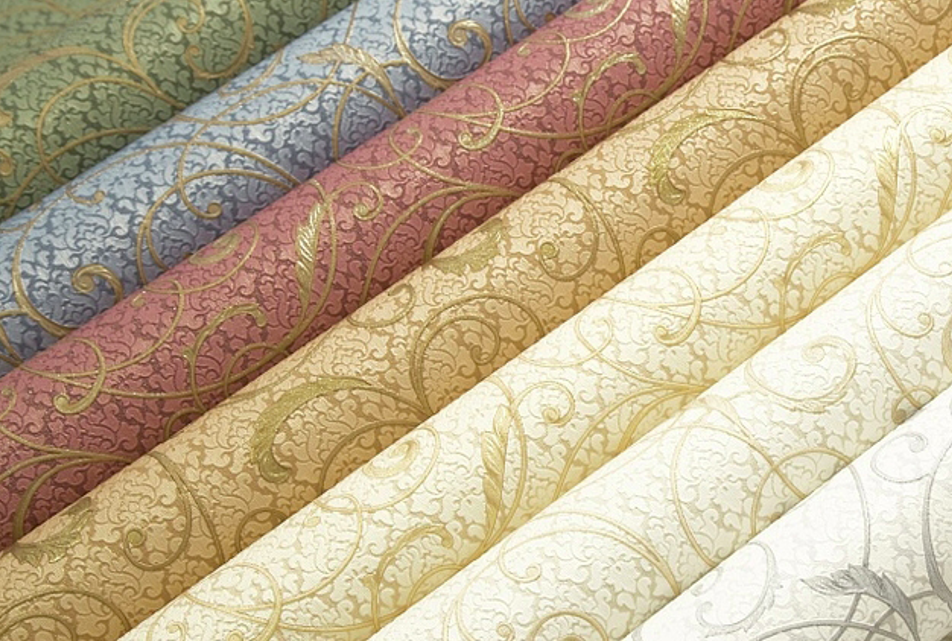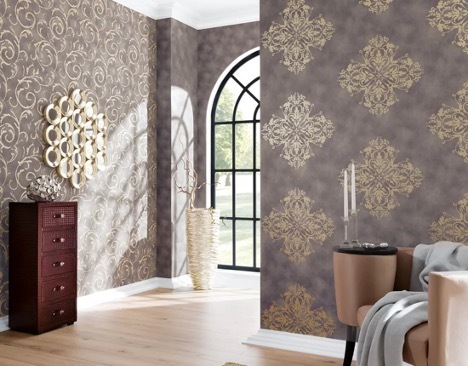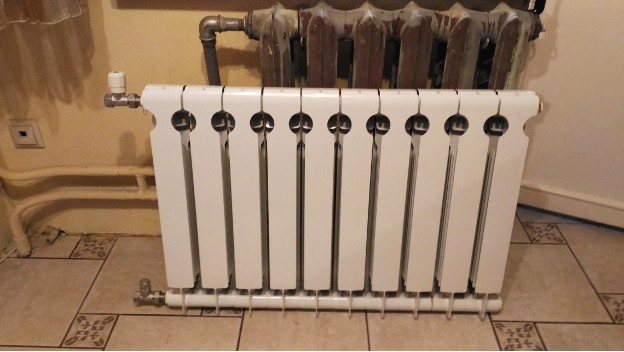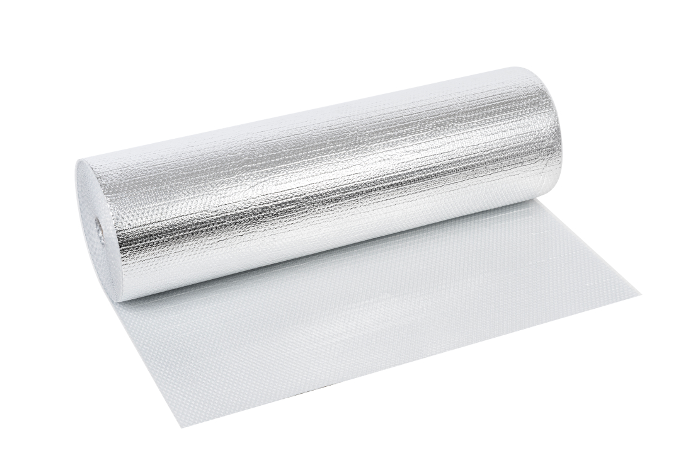Non-woven wallpaper - these are canvases that are wholly or partially composed of the material of the same name. Interlining is a non-woven fabric based on cellulose fiber with the addition of polyester. This composition provides resistance to deformation, mechanical stress and repainting. The features, pros and cons of non-woven wallpaper are described in the presented article.
The content of the article
- Features of non-woven wallpaper
- Advantages and disadvantages
- Types and sizes of non-woven wallpaper
- Wallpaper Tips
- Care instructions
Features of non-woven wallpaper
We can say about non-woven wallpaper that this is such a special coating, which consists of 2 layers:
- Upper (decorative) - paper, textile or vinyl.
- Lower (substrate) - base on non-woven or vinyl.
Thus, non-woven wallpapers differ from classic ones precisely in that they are covered with an additional layer, which determines their properties. Considering what non-woven wallpaper is, it is necessary to describe exactly the features of this material.

The substrate can be covered with 2 types of canvas:
- Vinyl is cheaper and easier to maintain. Does not fade in the sun, has water-repellent properties. Vinyl is chemically inert, so it is completely safe for people and pets.
- Interlining - has all the advantages described and also passes air well. Thanks to this, we can say about non-woven wallpaper that this is a universal coating that is suitable for both the bedroom and the children's room.
Advantages and disadvantages
If we talk about non-woven wallpaper, what kind of material it is, and what are its features, the main advantages of such a composition should be highlighted:
- Soft yet durable at the same time. Well keeps a form, the surface is not torn. If it is wrinkled, it will quickly straighten out, so even when re-gluing, you can use the old material.
- Even if you wet the coating, it dries quickly, and without a trace.
- Easy to stick on any surface with or without plaster. Glue is applied to the wall, while the wallpaper does not need to be lubricated.
- If we talk about what non-woven wallpaper means, we need to mention such a property as the possibility of repeated application of paint. This is especially important for a child's room.
- Fire resistance.
- The interlining is smooth, so it repels dust, and does not accumulate it.
- Excellent air permeability.
- Does not form wrinkles.
- Can be easily removed if needed.

But it is worth remembering that different types of non-woven wallpaper have disadvantages:
- The top layer is sensitive to frequent contact and damage - small children and animals can damage it.
- The cost is significantly higher compared to paper material.
- On sale it is easy to find low-quality non-woven wallpaper made from poor raw materials.
Types and sizes of non-woven wallpaper
There are 2 types of such coatings:
- Fully non-woven wallpaper - they are made of 100% of this material. Moreover, they have several layers, among which only the outer one with a relief, and the rest - with a flat surface. They look very nice, can be repeatedly repainted. More durable, but also more expensive.
- Cloths with only a non-woven base. The top (decorative) layer is represented by vinyl, paper or, less commonly, textiles. The interlining itself is adjacent to the wall and provides fixation. Usually these materials are cheaper.
In both cases, the canvas turns out to be quite dense, so rolls with a width of 106 cm are produced. The length is standard - it is always 1050 cm, i.e. 10 m and 5 cm. But there are exceptions - for example, the length of the wallpaper for painting is exactly 25 m.
Wallpaper Tips
There are several ways to choose non-woven wallpaper. You need to pay attention to the following parameters:
- The price factor - it is better to choose Russian materials, since they are of sufficient quality and at the same time cheaper compared to foreign manufacturers.
- If there are small children or animals in the house, you should purchase a dense canvas with an anti-vandal coating - it is the most durable.
- For lovers of aesthetics, we can recommend fabric wallpaper with a textile decorative (top) layer.
- If you take it to the kitchen, vinyl flooring is best. It is also recommended for a child's room.
- General design guidelines should also be taken into account. So, pastel-colored wallpapers are selected in the bedroom, and white plain canvases can be purchased in the hall.

Care instructions
Caring for non-woven wallpaper is quite simple, but it is necessary to take into account the features of a particular material:
- If there is a large relief on the surface, cleaning is carried out with a vacuum cleaner or a brush with soft bristles.
- If there is no relief, it can be processed in a dry and wet way.
- Vinyl-coated canvases allow wet cleaning, including the use of chemicals.
- Paper and textile coverings can only be cleaned with a dry method - with a brush or vacuum cleaner.
Thus, non-woven wallpaper is a fairly dense and durable material with "breathing" properties and a beautiful texture. These wallpapers are well suited for different rooms, including the nursery, bedroom, kitchen and living room. When choosing a specific type, it is recommended to take into account the features of the room and the brand of the manufacturer, as well as the color scheme of the canvas.


